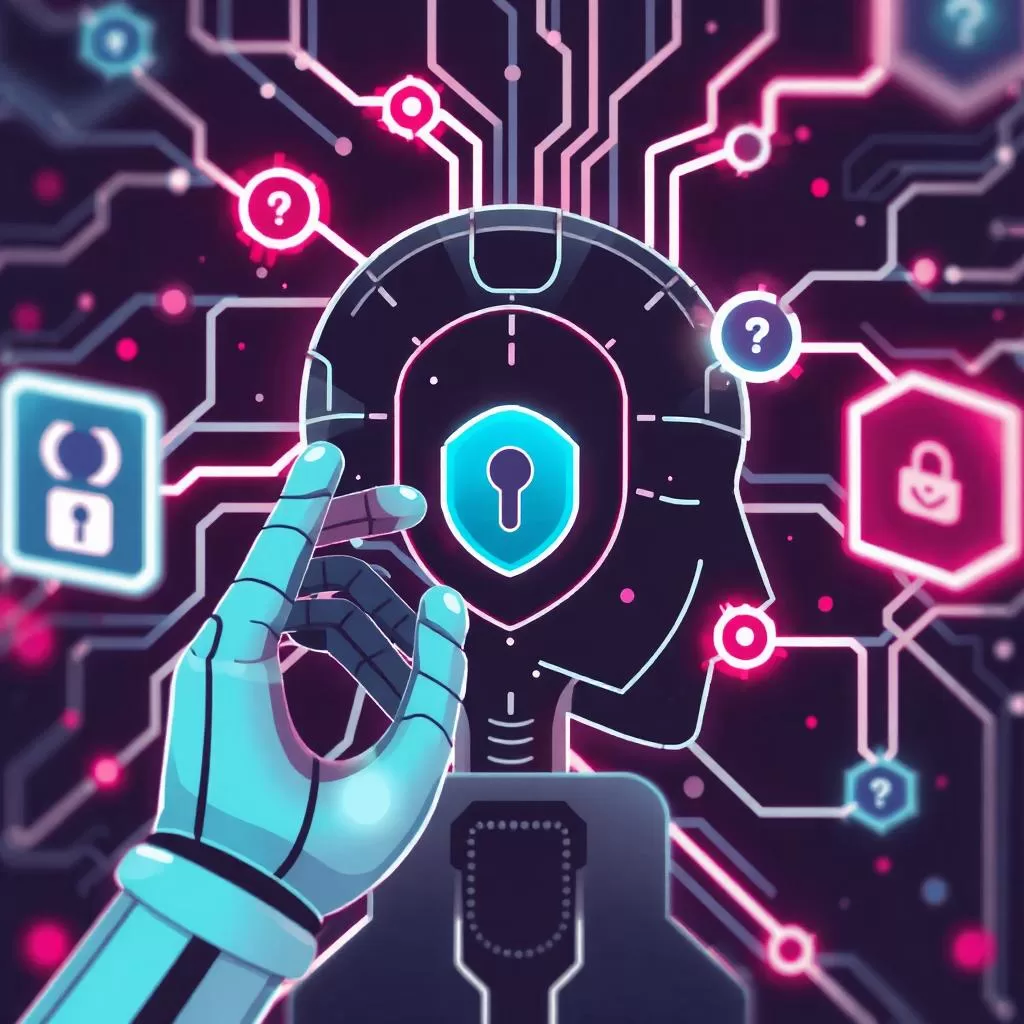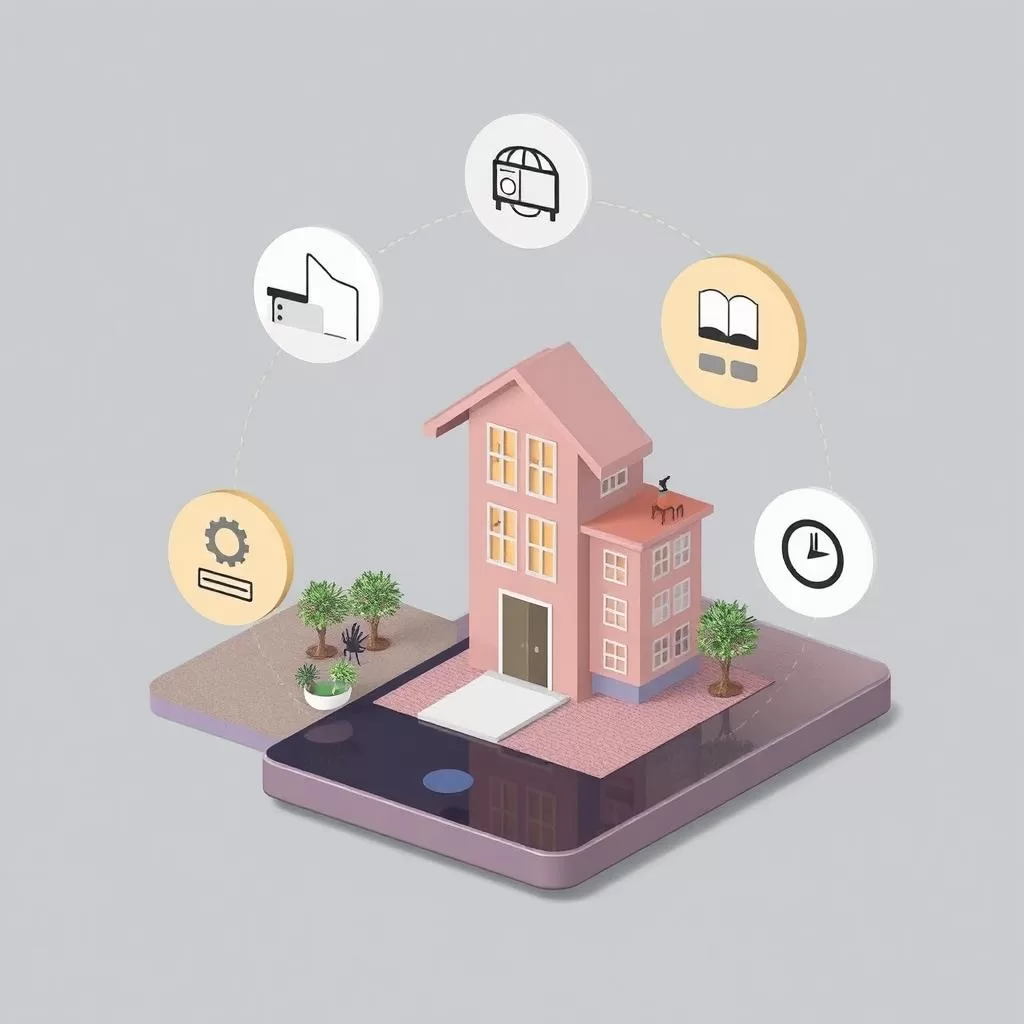How AI is Transforming Cybersecurity in 2025
As cyber threats grow increasingly sophisticated and frequent, traditional security measures are no longer enough to keep organizations safe. That’s where how AI is transforming cybersecurity becomes critically important. Artificial Intelligence (AI) is revolutionizing the way we defend against digital threats by enabling real-time threat detection, automated response mechanisms, and predictive analytics that anticipate attacks before they happen. This powerful shift not only enhances security but also allows IT teams to stay ahead in an ever-evolving threat landscape.
By 2025, AI-driven cybersecurity will be essential for businesses, governments, and individuals to protect sensitive data from cybercriminals.
What You’ll Learn in This Article:
- How AI enhances cybersecurity
- The role of machine learning in threat detection
- The future of AI-powered security systems
The Rise of AI in Cybersecurity
🔹 AI is transforming cybersecurity by automating threat detection and response.
As the volume and complexity of cyber threats continue to rise, traditional security methods struggle to keep pace.
AI revolutionizes this by automating threat detection and response in real time, reducing the need for human intervention and drastically improving efficiency.
AI systems use advanced algorithms to identify anomalies in network traffic, system behavior, and user activity, flagging potential threats within milliseconds.
Once a threat is detected, AI can initiate immediate actions, such as isolating infected devices, blocking malicious IP addresses, or even patching vulnerabilities, minimizing the impact of attacks and preventing further damage.
This rapid response is crucial, especially in a landscape where every second counts in preventing data breaches, ransomware, and other high-risk attacks.
🔹 AI-powered cybersecurity tools analyze vast amounts of data faster than humans.
One of the greatest challenges in cybersecurity is the sheer volume of data that needs to be analyzed to spot threats.
AI-powered tools can sift through massive datasets—such as logs, network traffic, and endpoint behaviors—at lightning speed, far beyond human capacity.
Using advanced data analytics, AI can quickly detect subtle patterns, correlations, or irregularities that might indicate a security breach, something human analysts might miss due to time constraints or data overload.
This capability is particularly valuable in environments where data is constantly changing, such as cloud platforms or IoT networks.
By scanning and analyzing information in real-time, AI ensures that potential threats are detected early, giving businesses a proactive defense rather than a reactive one.
🔹 Machine learning algorithms adapt to new and evolving cyber threats.
Unlike traditional cybersecurity systems that rely on predefined rules and signatures, machine learning (ML) algorithms evolve as they are exposed to new data.
Machine learning models continuously learn from past attacks, adapting their detection capabilities to recognize previously unseen threats, including new malware strains or attack vectors.
This means that as hackers become more sophisticated, AI-powered systems can also become more adept at identifying emerging threats, staying one step ahead of cybercriminals.
For example, an ML model trained on known phishing patterns will gradually improve over time, identifying new forms of phishing attempts or more advanced social engineering tactics.
By continuously refining its understanding of threats and adjusting defenses accordingly, machine learning provides a dynamic and adaptable approach to cybersecurity, ensuring that defenses are always up to date.
💡 For example, AI detects phishing emails, malware, and network intrusions in real time.
🔗 Related: How to Secure Your Online Payments: 10 Essential Tips
AI-Powered Threat Detection & Prevention
AI security systems continuously monitor networks and detect anomalies that indicate cyberattacks.
🔹 How AI Detects Threats:
✔ Behavioral Analysis – Identifies Unusual Activities
One of the key ways how AI is transforming cybersecurity is through behavioral analysis.
AI first builds a baseline profile of normal user behavior, analyzing patterns such as login times, access frequency, and typical actions within applications.
Over time, the system learns what “normal” behavior looks like for each individual or system.
When deviations occur—such as accessing restricted files, copying large volumes of data, or logging in from an unusual location—AI can immediately flag these actions as potential threats.
These abnormal behaviors could indicate insider threats, compromised accounts, or even early signs of a cyberattack, allowing teams to respond before any real damage is done.
✔ Anomaly Detection – Flags Suspicious Login Attempts
In how AI is transforming cybersecurity, anomaly detection is critical for preventing unauthorized access.
AI continuously scans login patterns, monitoring for any deviation from established norms.
For example, it can detect login attempts from unfamiliar IP addresses, devices, or geographic locations that deviate from the user’s typical behavior.
Even minor anomalies—like logging in at unusual hours or attempting access from a new device—prompt AI to trigger alerts in real time.
By catching these irregularities early, AI helps organizations prevent potential breaches before attackers can exploit vulnerabilities.
✔ Real-Time Monitoring – Prevents Attacks Before They Happen
Another key aspect of how AI is transforming cybersecurity is its ability to provide real-time monitoring.
AI-driven systems are constantly scanning networks, endpoints, and applications for signs of malicious activity—24/7.
This proactive surveillance enables AI to detect threats such as ransomware, phishing, and DDoS attacks before they can spread across the network.
By identifying these attacks early, AI helps block them at the point of entry, effectively preventing significant damage, downtime, or data loss.
In essence, AI doesn’t wait for attacks to occur—it anticipates and stops them before they take root.
💡 For example, AI-powered firewalls, with their real-time monitoring capabilities, are now able to block cyberattacks instantly, adapting their defense strategies as new threats emerge.
This instant response ensures that your systems are protected from the latest attack methods without delay.
AI in Fraud Prevention & Identity Protection
🔹 AI fights online fraud by detecting unusual transactions and login patterns.
To start, AI monitors spending habits and login behavior in real time.
It instantly flags suspicious transactions—like sudden high-value purchases or access from unfamiliar locations.
This quick detection helps stop fraud before any serious damage occurs.
🔹 Facial recognition and biometrics secure online accounts.
In addition, AI enhances authentication through facial scans, fingerprints, and voice recognition.
These biometric methods are harder to fake than passwords, adding a powerful layer of protection.
They also improve user convenience by enabling faster, password-free access.
🔹 AI-driven anti-phishing software protects users from scams.
Finally, AI scans emails, links, and messages for signs of phishing or malicious intent.
It identifies fake websites, spoofed email addresses, and suspicious language in real time.
Users are warned instantly, reducing the risk of falling for scams or identity theft.
💡 For example, AI in banking apps prevents fraudulent transactions.
🔗 Related: The Future of QR Code Payments
AI and Automated Incident Response
🔹 Benefits of AI-Powered Cyber Defense:
✔ Instant Threat Neutralization – AI isolates infected systems.
When a threat is detected, AI doesn’t wait.
It immediately quarantines affected devices or applications to stop the spread.
This rapid isolation minimizes damage and prevents full-scale breaches.
✔ Automated Security Updates – AI patches vulnerabilities.
AI constantly scans for outdated software and weak spots in your system.
Once found, it can apply patches and updates automatically—often before attackers can exploit them.
This ensures your defenses stay up to date without relying on manual checks.
✔ AI Chatbots for Security – Provide real-time cybersecurity assistance.
Need instant help during a potential cyber incident?
AI-powered chatbots are available 24/7 to guide users through basic security steps.
They can answer questions, report issues, and even trigger alerts—all without human delay.
💡 For exaple,AI-driven SIEM (Security Information and Event Management) solutions enhance response times.
AI in Cloud Security & IoT Protection
🔹 AI protects cloud storage and Internet of Things (IoT) devices.
As more data moves to the cloud and IoT devices multiply, security gaps widen.
AI steps in by constantly monitoring cloud environments and connected devices for vulnerabilities.
It helps ensure that data stays secure—no matter where it lives or how it’s accessed.
🔹 Prevents DDoS attacks, unauthorized access, and data breaches.
AI can detect and mitigate Distributed Denial of Service (DDoS) attacks within seconds.
It also identifies unauthorized access attempts, blocking them before they reach critical systems.
By analyzing network behavior, AI stops breaches before attackers gain control.
🔹 AI ensures real-time encryption and access control.
AI automates encryption processes, keeping data protected during storage and transfer.
It also manages who can access what—granting or revoking permissions in real time.
This helps organizations maintain strict data privacy and compliance across devices and platforms.
💡 For example, AI in smart home security systems detects intruders & hacking attempts.
Future of AI in Cybersecurity
🚀 AI-Powered Predictive Threat Intelligence
In the future, AI won’t just react to threats—it will predict them.
By analyzing global threat data, AI can identify patterns and forecast cyberattacks before they happen.
This proactive approach will help organizations prepare defenses in advance and reduce the risk of being blindsided.
🚀 Quantum Computing in Cybersecurity
As quantum computers emerge, traditional encryption methods may become obsolete.
AI will play a crucial role in developing quantum-resistant security protocols.
Together, AI and quantum computing will redefine the speed, complexity, and strength of future cybersecurity systems.
🚀 Blockchain + AI for Ultra-Secure Systems
Combining blockchain’s decentralized nature with AI’s intelligence creates an almost tamper-proof environment.
AI can monitor blockchain activity in real time, flagging anomalies or fraudulent behavior instantly.
This synergy will power ultra-secure systems for finance, healthcare, and government operations.
🚀 AI-Driven Security for Self-Driving Cars & IoT
As smart devices and autonomous vehicles become more common, they’ll need intelligent, adaptive protection.
AI will guard these systems by detecting unusual behavior, blocking remote threats, and learning from each new interaction.
This will be essential for ensuring safety, especially in life-critical environments like transportation and healthcare.
💡 For example, AI-powered cybersecurity in autonomous vehicles prevents hacking.
Conclusion: How AI is transforming cybersecurity
Artificial Intelligence is no longer a futuristic concept—it’s a game-changer in today’s cybersecurity landscape.
By making security systems smarter, faster, and more adaptive, AI empowers organizations to defend against increasingly complex threats.
Unlike traditional tools that react after an attack, AI predicts, prevents, and neutralizes threats in real time.
From detecting fraud and securing cloud data to protecting IoT devices and anticipating cyberattacks, AI is reshaping every corner of digital defense.
As cybercriminals grow more sophisticated, AI ensures that businesses, governments, and individuals stay one step ahead.
Investing in AI-powered cybersecurity isn’t just an upgrade—it’s a necessity for surviving and thriving in a digital-first world.
The future of cybersecurity is intelligent, automated, and driven by AI. And that future is already here.
🔑 Key Takeaways:
✅ AI Automates Cybersecurity, Reducing Human Error
AI is transforming cybersecurity by automating routine security tasks, such as threat detection and incident response.
Unlike traditional methods, which rely on human oversight and can be prone to fatigue or error, AI operates 24/7 with unmatched precision.
This reduces the risk of human mistakes, like overlooking critical vulnerabilities or failing to respond quickly enough to a threat.
As a result, AI ensures that security protocols are followed consistently and in real-time, giving businesses a much stronger defense.
✅ AI-Powered Fraud Detection Protects Financial Transactions
AI is revolutionizing fraud detection, especially in industries like banking and e-commerce.
By analyzing transaction data and customer behavior patterns in real-time, AI can quickly spot anomalies that suggest fraudulent activity.
Whether it’s detecting unusual login attempts, large transactions in short time frames, or sudden location changes, AI can flag potential fraud before any harm is done.
This proactive approach minimizes losses and protects both businesses and consumers from financial crimes.
✅ The Future of Cybersecurity Will Rely on AI, Blockchain, and Quantum Computing
Looking ahead, the landscape of cybersecurity will be powered by cutting-edge technologies like AI, blockchain, and quantum computing.
AI will continue to evolve, enabling predictive threat detection, automation, and real-time responses to attacks.
Blockchain will ensure ultra-secure, decentralized systems, making it nearly impossible for hackers to alter transaction records or steal data.
Meanwhile, quantum computing will challenge traditional encryption methods, and AI will be at the forefront of developing quantum-resistant cybersecurity measures.
Together, these technologies will form a comprehensive defense ecosystem that is faster, more intelligent, and more resilient than ever before.
Do you want to learn more on how AI is transforming cybersecurity? Read this article.
💬 How do you think AI will change cybersecurity? Share your thoughts in the comments!
Share this content:







Post Comment